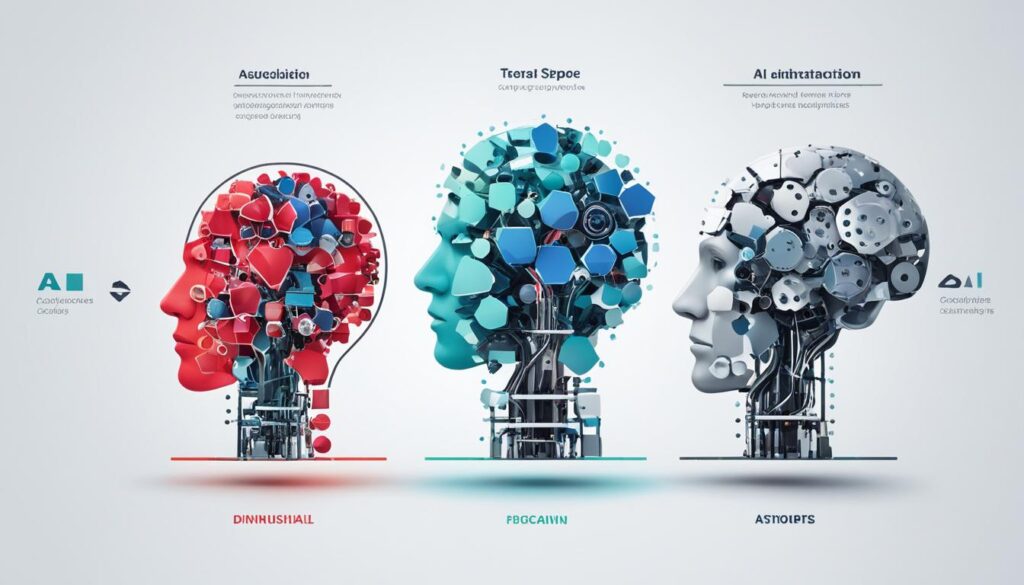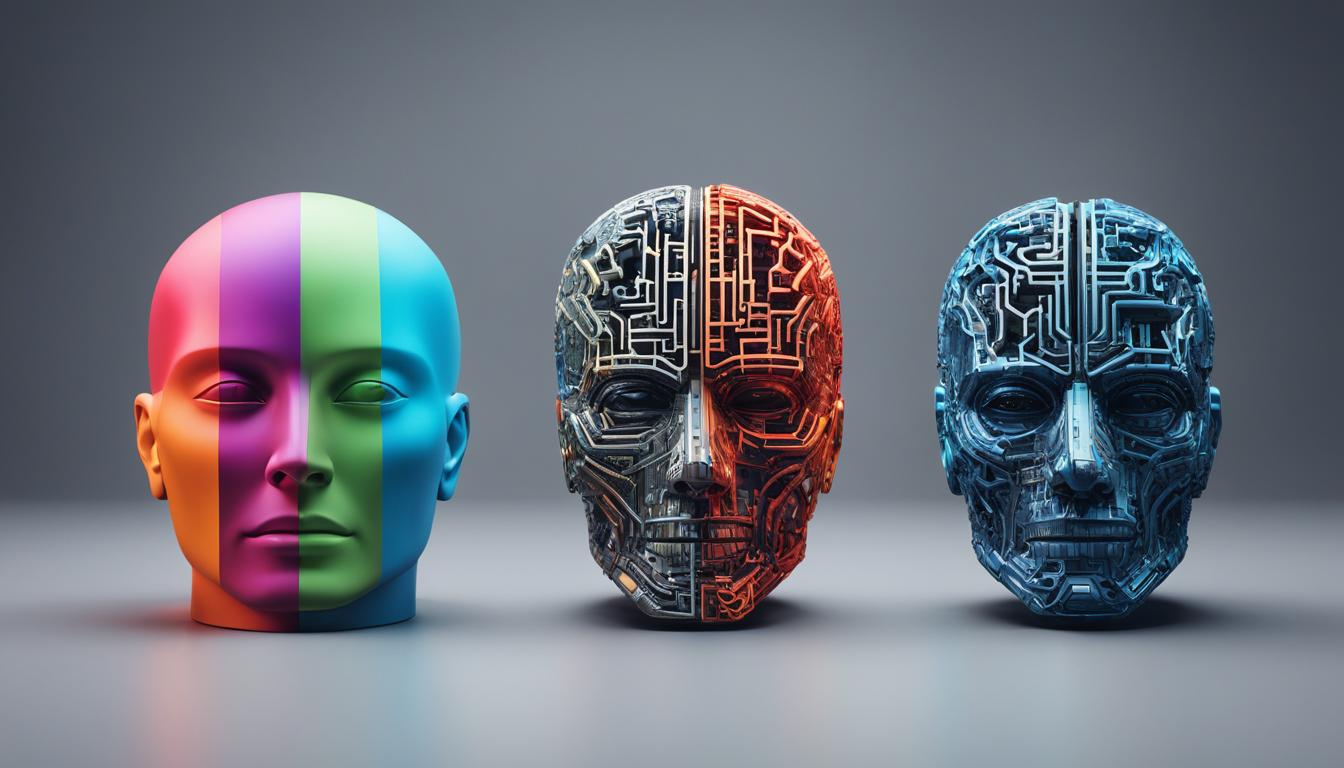Artificial Intelligence (AI) is a revolutionary technology that has transformed the 21st century. It is essential to understand the different types of AI to comprehend its impact. AI can be classified into three main types: Narrow AI, General AI, and Super AI.
Contents
Key Takeaways:
- Narrow AI, General AI, and Super AI are the three main types of artificial intelligence.
- Each type of AI has different capabilities and functionalities.
- Narrow AI specializes in specific tasks, while General AI aims to be as intelligent as a human.
- Super AI is a theoretical concept with cognitive capabilities beyond human capacity.
- Understanding the types of AI is crucial in harnessing its benefits while addressing the associated challenges.
Types of AI Based on Capabilities
When categorizing artificial intelligence (AI), we can examine its capabilities, which define the scope and range of tasks it can perform. The different types of AI include Narrow AI, General AI, and Super AI.
Narrow AI (Weak AI)
Narrow AI, also known as Weak AI, refers to AI systems that are designed to excel in specific tasks within limited domains. These AI systems possess specialized knowledge and can outperform humans in their specific areas of expertise. However, they lack the ability to perform tasks beyond their designated parameters. Examples of Narrow AI include AI-powered voice assistants like Amazon’s Alexa and Apple’s Siri.
“Narrow AI, also known as Weak AI, is efficient in performing tasks within predefined boundaries, but it lacks the broader cognitive abilities of human intelligence.” – AI expert
General AI (Strong AI)
General AI, or Strong AI, aims to replicate human-like intelligence and capabilities. It possesses the ability to understand, learn, and apply knowledge across various domains, just like a human. General AI has the potential to perform any intellectual task that a human can do and can adapt to new situations and challenges. However, achieving true General AI remains a significant scientific and technological challenge.
“General AI is the holy grail of AI development, as it strives to match and even surpass human cognitive capabilities.” – AI researcher
Super AI
Super AI is a theoretical concept that exceeds human intelligence by a substantial margin. In this scenario, machines possess cognitive capabilities that go beyond human capacity. Super AI would have the ability to understand complex problems, solve them efficiently, and have superior reasoning and decision-making abilities. While Super AI remains a concept, its potential implications and impact on society raise important questions related to ethics, control, and human-machine interaction.
“Super AI, if realized, would mark a significant milestone in the field of artificial intelligence, with unprecedented cognitive abilities that could reshape various aspects of human life.” – AI expert
Understanding the different types of AI based on their capabilities provides valuable insights into the current and future landscape of AI technology. It helps us comprehend the boundaries and potential of AI systems, enabling us to harness their capabilities to drive innovation and solve complex problems.
Continue to Section 3 to explore the various types of AI based on functionalities.
Types of AI Based on Functionalities
AI can be classified into different types based on its functionalities. Each type of AI possesses unique characteristics and capabilities that determine its role and potential applications. Let’s explore the various types of AI based on their functionalities:
1. Reactive Machines AI
Reactive Machines AI operates solely in the present moment and does not have memory or the ability to draw from past experiences. These AI systems are designed to respond to specific inputs and perform predefined tasks. They excel at analyzing real-time data and making instant decisions. However, they lack the ability to learn or adapt based on previous encounters or experiences.
2. Limited Memory AI
Limited Memory AI is capable of learning from past data and utilizing this knowledge to influence their decisions and actions. These AI systems have the ability to store and retrieve information, allowing them to make more informed choices. Limited memory AI is commonly used in applications that require historical data analysis, such as fraud detection, customer behavior prediction, and recommendation engines.
3. Theory of Mind AI
Theory of Mind AI aims to simulate human relationships and better comprehend human beliefs, intentions, and emotions. This type of AI attempts to understand and predict the behavior of individuals by inferring their thoughts and feelings. Theory of Mind AI is essential in applications like personal assistants, social robots, and customer service chatbots, where understanding human interactions is crucial.
4. Self-Aware AI
Self-Aware AI represents the ultimate stage of AI development, where machines possess self-awareness and cognitive capabilities similar to humans. This type of AI has a deep understanding of its own existence, emotions, and consciousness. Self-aware AI is purely theoretical at the moment and remains a topic of exploration in scientific research, philosophy, and future AI development.

Understanding the different types of AI based on their functionalities is crucial in harnessing the power of artificial intelligence. Each type has its own strengths and limitations, and the choice of AI system depends on the specific requirements and objectives of the application.
Benefits and Challenges of AI
Artificial Intelligence (AI) has a profound impact on society, bringing forth a multitude of benefits and challenges. Understanding these aspects is crucial as we navigate the advancements of this transformative technology.
Benefits of AI
AI offers several notable benefits:
- Increased Efficiency: AI-powered systems can perform tasks faster and more accurately, saving time and resources.
- Improved Decision-making: AI algorithms can analyze vast amounts of data to provide valuable insights and assist in decision-making processes.
- Automation of Repetitive Tasks: AI can tackle mundane and repetitive tasks, freeing up human resources for more complex and creative work.
These benefits of AI have the potential to revolutionize various industries, improve productivity, and enhance the overall quality of life.
Challenges of AI
Despite the numerous benefits, AI also presents challenges that must be addressed:
- Job Displacement: The automation capabilities of AI may lead to job displacement, as certain tasks can be performed more efficiently by AI systems. This necessitates the need for upskilling and reskilling efforts to adapt to the changing job landscape.
- Bias in Algorithms: AI algorithms can be influenced by biased data, resulting in unfair decisions and perpetuating existing societal biases. It is crucial to ensure algorithms are designed and trained in a way that minimizes biased outcomes.
- Privacy and Security Concerns: AI relies on vast amounts of data, raising concerns about privacy and security. Safeguarding personal and sensitive information becomes paramount to protect individuals from potential misuse.
Addressing these challenges requires a comprehensive approach that involves ethical AI design, continual monitoring, and measures to ensure fairness, transparency, and accountability.
AI has the potential to revolutionize industries, improving efficiency and decision-making. However, it is essential to address challenges such as job displacement, algorithmic biases, and privacy concerns, to harness the benefits of AI responsibly and ensure a positive impact on society.
Impact of AI on Society
The impact of AI on society is far-reaching, influencing various aspects of our lives:
| Benefit | Impact on Society |
|---|---|
| Increased Efficiency | Streamlined workflows, reduced costs, and improved customer experiences in industries such as healthcare, logistics, and finance. |
| Improved Decision-making | More informed business strategies, personalized recommendations, and efficient resource allocation in areas like marketing and supply chain management. |
| Automation of Repetitive Tasks | Relieving humans from mundane tasks, enabling them to focus on complex problem-solving and innovation. |
| Job Displacement | Potential changes in the workforce, requiring individuals to acquire new skills to adapt to evolving job requirements. |
| Bias in Algorithms | Potential perpetuation of societal biases in decision-making processes, leading to unfair treatment and reinforcing inequities in society. |
| Privacy and Security Concerns | Ensuring the protection of personal information and guarding against potential threats to cybersecurity. |

In summary, mitigating the risks associated with AI requires a multi-faceted approach. Ethical design principles, human oversight, diversity in data, and robust cyber security measures are crucial in ensuring the responsible development and deployment of AI technologies. By prioritizing these strategies, we can harness the power of AI while minimizing potential drawbacks, fostering a safer and more equitable AI-powered future.
Conclusion
In conclusion, artificial intelligence (AI) is a transformative technology that has a significant impact on society. The benefits of AI include increased efficiency and improved decision-making, which can streamline processes and enhance productivity in various industries. However, along with these benefits come challenges that need to be addressed to ensure a positive AI impact on society.
One of the challenges is job displacement, as AI has the potential to automate certain tasks, leading to changes in the workforce. Moreover, bias in algorithms is another concern, as AI systems are only as fair and unbiased as the data they are trained on. It is crucial to actively address these challenges and ensure that AI is ethically designed and implemented.
Additionally, security risks such as privacy breaches and hacking are significant concerns. To mitigate these risks, cyber security measures must be implemented to safeguard AI systems and protect sensitive data. Furthermore, human oversight and diverse data sets are important to avoid biases and ensure that AI systems are transparent, accountable, and inclusive.
By actively working to address these challenges and making responsible choices in AI development and deployment, we can maximize the benefits of AI while minimizing its risks. It is crucial to harness the power of AI to improve societies around the world, while also being mindful of the potential unintended consequences. With careful consideration, AI has the potential to revolutionize industries and be a force for good in society.
FAQ
What are the different types of artificial intelligence?
The three types of artificial intelligence are Narrow AI, General AI, and Super AI.
How can artificial intelligence be categorized based on capabilities?
AI can be categorized based on capabilities into Narrow AI (Weak AI), General AI (Strong AI), and Super AI.
What are the types of AI based on functionalities?
AI can be categorized based on functionalities into Reactive Machines AI, Limited Memory AI, Theory of Mind AI, and Self-Aware AI.
What are the benefits and challenges of AI?
The benefits of AI include increased efficiency, improved decision-making, and automation of repetitive tasks. However, challenges include job displacement, bias in algorithms, and concerns about privacy and security.
How can we mitigate the risks of AI?
Risks associated with AI can be mitigated through ethical design, human oversight, using diverse data sets, and implementing cybersecurity measures.




